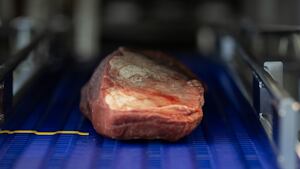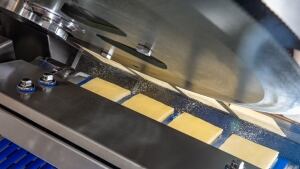While inflationary pressures have dominated the media headlines over the past few months, opinions are divided on whether the consumer focus on sustainability has taken a back seat.
A report last year in FoodNavigator suggests that might be the case, with an estimated 71% of consumers prioritising value for money over sustainability when shopping for food and drink. In the article, Clair Prior, insights manager for food and drink business consultancy Levercliff argues that it’s not that consumers don’t care about sustainability, but they have more pressing concerns and that the cost of more sustainable options is seen as the main barrier to shopping more sustainably.
Meanwhile, an article in Raconteur later in the year also suggests sustainability is taking a back seat for businesses, with a recent KPMG survey finding that half of CEOs are contemplating pausing or reconsidering their ESG efforts because of economic pressures.
However, also last year, a report on The Grocer’s website noted that, despite the cost-of-living crisis, sustainability is still a priority for UK shoppers. A poll of 1,000 people – carried out by Lumina Intelligence in August 2022 – reveals that most feel sustainability should be prioritised despite the downturn. One in four (24%) says sustainability should be a priority for retailers and manufacturers. Twenty nine per cent say that while some sacrifices are acceptable, the environment should remain a key focus.
And in November, five major supermarkets reaffirmed their pledge, first made at COP 26, to halve the food system’s environmental impact by 2030.
Indeed, according to a Which? report, the UK’s supermarkets all plan to make their plastic packaging 100% reusable, recyclable or compostable by 2025 at the latest5. “Using less plastic is better for the environment than recycling, so we compared how many tonnes of plastic each supermarket puts onto the market annually, per 100,000 items sold,” it says. “[Supermarkets] should also eliminate unnecessary plastic and make their own-brand plastic as widely recyclable as possible – and labelled as such.”
Perception vs expectation
However, when it comes to supermarkets reducing plastics there’s something of a chicken and egg situation. Consumers want to see the supermarkets take proactive moves on sustainability and remove as much plastic as possible from their supply chain. But when it comes down to it, shoppers will tend to baulk at buying products they think don’t quite look right – such as wonky carrots or browning red meat. As food business consulting service The Greater Goods notes: “Studies show that food packaging can affect our perceptions of food quality, freshness, and taste. Many consumers will pay more for food that is packaged attractively or charmingly. Packaging can evoke positive emotions and create a strong bond with food products.”
Making progress

In a previous feature on foodmanufacture.co.uk in September last year, packaging company Multivac outlined the difficulties faced by fmcg food and drink brands in reducing plastics, particularly in terms of the materials used. The company’s business unit manager, materials Elliot Chrisp noted that there was no silver bullet polymer out there to solve the problem of reducing plastic while maintaining food integrity, but hinted that one major supermarket was looking at extending shelf-life while reducing plastic… all while taking the risk of a completely altered pack presentation.
Since then, he reveals that Multivac has worked with a major meat supplier and supermarket to effect that change, using its Flex/Flex Vacuum Packaging. This type of vacuum packaging has been around for years, but has traditionally not been used on fresh meat in supermarkets. While it gives a better shelf-life on a product, it starves the product of oxygen, meaning that red meat, under these anaerobic conditions, looks more brown in colour – a factor that can be offputting to UK shoppers, who tend to believe (due to years of negative association) that the meat could have gone off.

However, this may be the price that needs to be paid if supermarkets are to successfully reduce their plastics, he notes, as there are multiple advantages to the use of Flex/Flex packs, including:
● a considerable reduction in the weight of materials per pack compared to pre-made trays and semi-rigid THF
● a reduction in material cost, which also reduces exposure to up-and-coming EPR Recycling Taxation
● improved shelf-life of 20 days plus = equivalent to two weekends in-store
● no need for gas flushing, thus saving CO2, which has been in short supply in recent years
● increased packs per pallet, resulting in a reducing in trailers, emissions and transportation costs
● smaller condensed packs for the same level of content, allowing shoppers increased space in fridges and freezers.

As Chrisp points out, some companies that deliver meal box subscriptions already use this type of packaging – on items such as mince, diced chicken, chicken breasts and fish – and the consumer has few concerns about it as it is not subject to presentation on-shelf; in the case of red meat, for example, once the pack is opened, the meat regains its bloom. “From a materials point of view, it’s a very old format,” he says. “One of the reasons why vacuum packaging was created in the first place was to try to increase shelf-life on proteins. It’s a proven process. The victory here is persuading a supermarket of the advantages to it and seeing them go over the line.”
The bottom line

Changing the customer perspective will be key to the success of this packaging in supermarkets, says Chrisp. “Currently, the Flex/Flex packaging supplied is not recyclable, despite the fact that it has reduced the supermarket’s annual usage of plastic by 55% or 450t,” he says. “However, recyclable packs are in development and likely to be launched in the next few months.”
If consumers are to gain their wish for more sustainable packaging and considerable reduction in plastics, it’s likely that compromise will have to be made somewhere down the line – and this first attempt will be a toe in the water to see how the packs, successful in their own right in terms of production, perform at shopper level.
“In sustainability, from what I have seen over the years, more people need to be bold, take these moves and change the way that we are packing,” concludes Chrisp. “This hasn’t been about a new packaging format; it’s that a major retailer has said: ‘This is the right choice, it’s more sustainable, it’s cheaper and, in the near future, we know it’s recyclable.’ That’s a great message.”
To find out more about Multivac can help with your sustainability drive, contact Chris Howard on chris.howard@multivac.co.uk.





